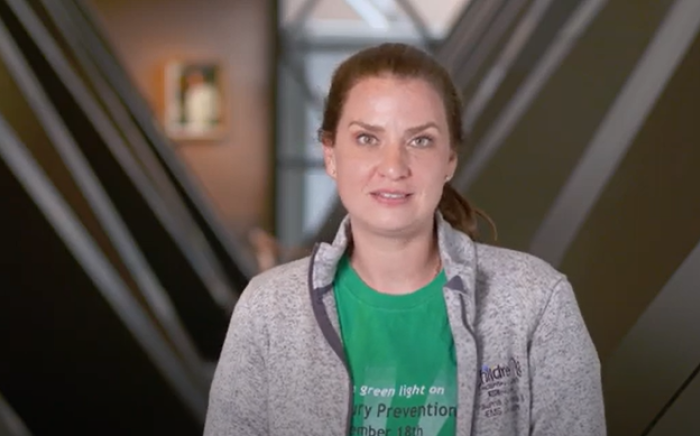Behavioral Hearing Tests
- Visual Reinforcement Audiometry: Your child will be tested while sitting on your lap in a sound booth. The audiologist will be in the test booth and you, your child and an assistant will be in the sound booth. Your child will be taught to turn his or her head each time he or she hears a sound. Your child is rewarded for responding with a lighted, animated toy, such as a bunny hopping or a dog moving. Initially sounds are presented through a speaker. Earphones may be worn depending on the child's cooperation (ages 8 months to 2 years, corrected age). Here's a video of what to expect during this test:
- Conditioned Play Audiometry: Your child will be tested while sitting on your lap (or sitting independently) in a sound booth. The audiologist will be in the test booth and you, your child and an assistant will be in the sound booth. Your child will be taught to play various games each time he or she hears a sound. They may stack scoops on an ice cream cone or place plastic coins in a piggy bank. Your child may or may not wear earphones during your visit (ages 2-5 years). Here's a video of what to expect during this test:
- Conventional Audiometry: Your child wears earphones and presses a button or raises a hand each time he or she hears a sound. They may also be asked to repeat a list of words (ages 5/6 years and up). Here's a video of what to expect during this test:
Tympanometry: This test tells how well your child’s middle ear system functions in response to pressure. The audiologist will place a small probe into each ear to measure this. This test is quick and painless, but your child may dislike this test if they are hesitant to have someone touch their ears.
Otoacoustic Emission Testing: This test measures the function of the cochlear hair cells in the inner ear. A probe sends a soft sound into the ear. A healthy cochlea responds and sends a sound back that is measured by the equipment. A small probe is placed in each ear canal and your child will need to sit quietly during the test. This test is painless, but your child may dislike this test if they are hesitant to have someone touch their ears.
Auditory Brainstem Response (ABR): This is a test that measures waveforms that occur when sound is presented to the ear. Because your child is too young or unable to be tested using other procedures, this test allows the audiologist to tell you how your child is hearing. Because this test requires your child to be very still, it is often done in a natural sleep state (infants) or with sedation.
- Sleep ABR: Children less than three months age are tested while sleeping.
- Sedated ABR: Children older than three months of age are sedated for ABR testing. This test can sometimes be done in conjunction with another sedated procedure (ear tubes, CT scan).
Central Auditory Processing Disorder (CAPD) Evaluation: An auditory processing disorder is the inability or impaired ability to recognize or comprehend information by hearing even though a person has normal intelligence and normal hearing sensitivity. An auditory processing evaluation assesses auditory perceptual skills as they relate to communication and academic performance.
Misophonia Evaluation: The initial misophonia evaluation appointment is with the audiologist and is typically scheduled in conjunction with a pediatric otolaryngologist at Washington University School of Medicine. The first appointment is comprised of a hearing evaluation, thorough interview of symptoms, and discussion of the multi-disciplinary approach to misophonia management at St. Louis Children’s Hospital.
Hearing Aid Evaluation and Fitting: For patients requiring amplification, audiology offers hearing aid services. Children identified with hearing impairments that warrant amplification can be scheduled for a series of appointments for the evaluation and fitting of personal amplification.












